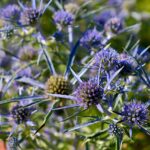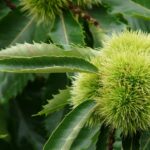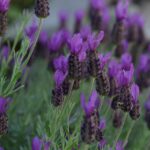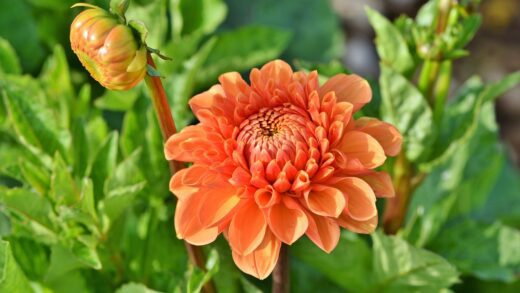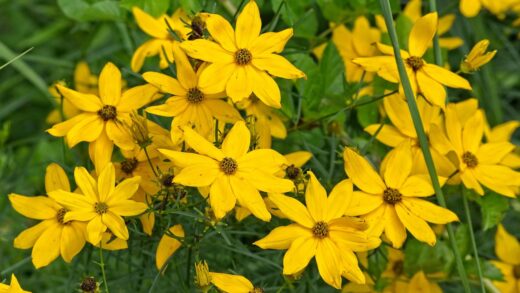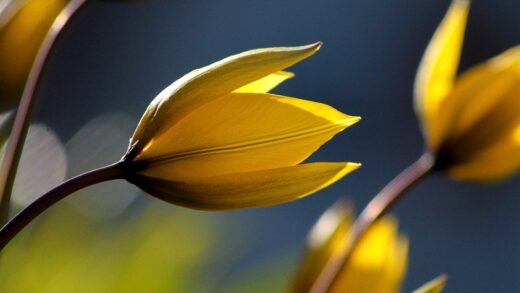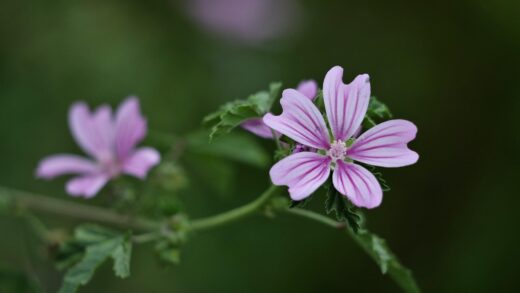Understanding the specific water requirements of glory-of-the-snow is fundamental to their successful cultivation, as their needs change dramatically throughout their annual growth cycle. As classic spring ephemerals, their demand for moisture is highest during their short but vigorous period of growth and flowering in the early spring. During this phase, adequate hydration is crucial for supporting foliage development, robust flowering, and the critical process of replenishing the bulb’s energy stores. However, once this active period concludes and the plant enters its long summer dormancy, its water needs diminish almost completely. Providing the right amount of water at the right time—and, just as importantly, withholding it when necessary—is key to preventing common problems like bulb rot and ensuring the long-term health and perennial nature of these beautiful spring bloomers.
The natural habitat of glory-of-the-snow, the mountainous slopes of the eastern Mediterranean, provides important clues to their irrigation needs. In these regions, the soil is kept consistently moist throughout the spring by melting snow and regular rainfall. This environment provides the steady supply of water needed for the plants to emerge, grow, flower, and set seed rapidly. Replicating these moist, cool spring conditions in the garden is the primary goal of any irrigation strategy for Chionodoxa.
Conversely, the summers in their native habitat are typically warm and dry. The bulbs have adapted to this by entering a state of dormancy, effectively sleeping through the period of heat and low moisture. This adaptation means they are not only tolerant of dry soil during the summer but actually require it for their health. Excessive summer watering is one of the most common reasons for the failure of these bulbs in a cultivated garden setting, as it creates conditions ripe for fungal diseases and rot.
Therefore, the core principle of watering glory-of-the-snow is to provide consistent moisture during the spring and to ensure the soil remains relatively dry during the summer. This requires a thoughtful approach to irrigation, especially in mixed plantings where nearby plants may have different water requirements. By understanding and respecting this natural cycle of hydration and drought, gardeners can create the perfect conditions for their glory-of-the-snow to thrive and multiply for years to come.
Understanding the plant’s natural water cycle
The water requirements of glory-of-the-snow are intrinsically linked to their ephemeral life cycle, which is a direct adaptation to their native climate. The cycle begins with the late winter and early spring moisture, which is the trigger for the bulbs to break dormancy and begin growth. The combination of melting snow and frequent spring rains creates a soil environment that is consistently moist, providing the water necessary for the rapid cellular expansion required for leaf and flower stalk emergence. This period of high water availability coincides perfectly with the plant’s peak metabolic activity.
More articles on this topic
During the active growth and flowering phase, transpiration rates are high as the leaves are fully engaged in photosynthesis. Water is drawn up from the roots, through the stem, and to the leaves, carrying essential nutrients and maintaining turgor pressure, which keeps the plant upright and healthy. A lack of sufficient moisture during this critical window can lead to stunted growth, smaller or fewer flowers, and a reduced ability for the foliage to generate the energy needed to replenish the bulb for the following year.
As spring progresses towards summer, a significant shift occurs. Once flowering is complete and the foliage has matured, the plant’s primary task is to transfer the energy it has created back down into the bulb. Concurrently, in its natural environment, rainfall typically becomes less frequent and temperatures begin to rise. The plant responds to these cues by initiating senescence; the leaves begin to yellow and wither, and the bulb prepares for dormancy. This transition marks a sharp decline in the plant’s need for water.
Throughout the summer and autumn, the bulb remains in a dormant state underground. During this period, it is essentially inactive and has very minimal water requirements. The dry soil conditions typical of a Mediterranean summer protect the bulb from decay and fungal attack. The cycle is completed when the autumn rains and winter snows begin to recharge the soil with moisture, preparing the ground for the bulb to reawaken in the following spring. This deep-seated rhythm of wet springs and dry summers is what a gardener must aim to replicate.
Watering during the active growth period
The active growth period, from the first emergence of shoots to the point where the foliage begins to yellow, is the only time glory-of-the-snow typically requires supplemental watering in a garden setting. In most temperate climates, natural spring precipitation is sufficient to meet their needs. However, it is important to monitor the conditions, as an unusually dry spring can necessitate intervention from the gardener. The goal is to maintain a soil that is consistently moist, similar to a well-wrung-out sponge.
More articles on this topic
When supplemental irrigation is required, it is best to water deeply and infrequently rather than lightly and often. A deep watering encourages the bulbs to develop a more extensive root system, making them more resilient. Water the planting area thoroughly until the top four to six inches of soil are moist. This ensures that the water reaches the root zone where it is needed. Allow the soil surface to dry slightly before watering again to ensure that the soil does not become waterlogged.
The best time of day to water is in the morning. This allows any moisture on the foliage to evaporate quickly as the day warms up, reducing the risk of fungal diseases. Watering in the evening can leave the leaves wet overnight, creating a more hospitable environment for pathogens. When watering, apply the water directly to the soil at the base of the plants, avoiding the flowers and foliage as much as possible to further minimize disease risk.
It is crucial to cease supplemental watering once the foliage begins to naturally turn yellow and die back. This is the unmistakable signal that the plant is entering dormancy and its need for water has ended. Continuing to water past this point can be detrimental, as it keeps the soil too moist during a period when the bulb requires dryness. This is the transition point where the gardener’s focus must shift from providing moisture to ensuring good drainage and dry conditions.
Irrigation practices in different soil types
The type of soil in which glory-of-the-snow are planted has a significant impact on irrigation practices. Soil texture determines how quickly water drains through it and how much moisture it retains. Gardeners need to adjust their watering frequency and volume based on whether their soil is predominantly sandy, loamy, or clay-based. Understanding the properties of the garden soil is therefore essential for providing appropriate care.
Sandy soils are characterized by large particles and large pore spaces, which results in very rapid drainage. While this is beneficial in preventing waterlogging, it also means that the soil dries out very quickly. In a sandy soil, glory-of-the-snow may require more frequent watering during a dry spring compared to other soil types. Incorporating plenty of organic matter, such as compost or leaf mold, into sandy soils can significantly improve their water-holding capacity, reducing the need for frequent irrigation.
Clay soils are at the opposite end of the spectrum, with very fine particles and small pore spaces. These soils can hold a large amount of water but have very slow drainage. The primary risk with clay soil is waterlogging, which can easily lead to bulb rot. It is critical to improve the drainage of clay soil before planting by amending it heavily with compost and coarse grit. When watering Chionodoxa in clay soil, it is essential to do so sparingly and to ensure the soil has had a chance to dry out somewhat between waterings.
Loam is the ideal soil type, as it contains a balanced mixture of sand, silt, and clay particles. It retains moisture well while still allowing excess water to drain away freely. In a loamy soil, glory-of-the-snow will require the least amount of irrigation management. Typically, natural spring rainfall will be sufficient, and supplemental watering will only be needed during extended dry spells. Even in loam, ensuring the area is not subject to water runoff from other parts of the garden during summer is important for the dormant bulbs.
The importance of dormancy and dry conditions
The summer dormancy period is a crucial and non-negotiable phase in the life cycle of glory-of-the-snow. This adaptation allows the plant to survive the heat and drought characteristic of its native Mediterranean summer climate. During dormancy, the bulb’s metabolic processes slow down to a bare minimum, and it is in a state of rest. For this dormancy to be successful and for the bulb to remain healthy, it requires relatively dry soil conditions.
Wet or soggy soil during the summer is the primary enemy of dormant Chionodoxa bulbs. Excessive moisture can trigger fungal and bacterial diseases, leading to bulb rot, a condition from which the bulb cannot recover. This is why excellent drainage is so often emphasized as a critical requirement for these plants. The soil must be able to shed excess water quickly, whether from summer rainstorms or from irrigation intended for neighboring plants.
In a mixed border, the need for dry summer conditions for glory-of-the-snow can present a challenge. They should be planted alongside other perennials or shrubs that also prefer or tolerate drier soils during the summer. Planting them near thirsty plants that require constant watering throughout the season is a recipe for failure. Alternatively, planting them in dedicated rock gardens or in raised beds can help to ensure the sharp drainage they need to thrive.
The gardener’s role during this dormancy period is largely one of non-intervention. Resist any temptation to water the area where the bulbs are planted, even if the ground appears very dry. The bulbs are perfectly adapted to handle these conditions. This hands-off approach ensures the bulbs are protected from rot and will be ready to emerge healthy and vigorous when the cool, moist conditions of the following spring arrive to break their dormancy.
Common watering mistakes to avoid
One of the most frequent mistakes in cultivating glory-of-the-snow is overwatering, particularly outside of the spring growing season. The belief that all plants need consistent moisture throughout the year leads many well-intentioned gardeners to water their dormant bulbs during the summer. This practice is highly detrimental and is the leading cause of bulb rot and the disappearance of the plants from the garden after a season or two. It is essential to remember that for these bulbs, dry summer soil is a requirement, not a problem.
Another common error is shallow, frequent watering during the spring growth period. Lightly sprinkling the soil surface every day does not provide the deep moisture that the bulbs’ roots need. This practice encourages shallow root growth, making the plants less resilient to dry spells. Instead, a deep and thorough soaking, allowing the water to penetrate several inches into the soil, followed by a period of slight drying, is a much more effective and beneficial strategy for the plant’s long-term health.
Neglecting to water during an unseasonably dry spring is another mistake that can compromise the health of the plants. While Chionodoxa are resilient, a prolonged lack of moisture during their peak growth phase will result in stress. This can lead to smaller flowers, premature yellowing of the foliage, and, most importantly, a reduced ability to store energy in the bulb. This will directly impact the quality of the floral display in the following year. Monitoring rainfall and providing supplemental water when needed in spring is a key aspect of proper care.
Finally, failing to consider the location and soil type when planning irrigation is a significant oversight. Planting glory-of-the-snow in a low-lying area that collects water or in unimproved heavy clay soil creates an environment where proper water management is nearly impossible. The initial site selection and soil preparation are paramount. By choosing a location with natural good drainage and amending the soil appropriately before planting, most potential watering problems can be avoided from the outset.







